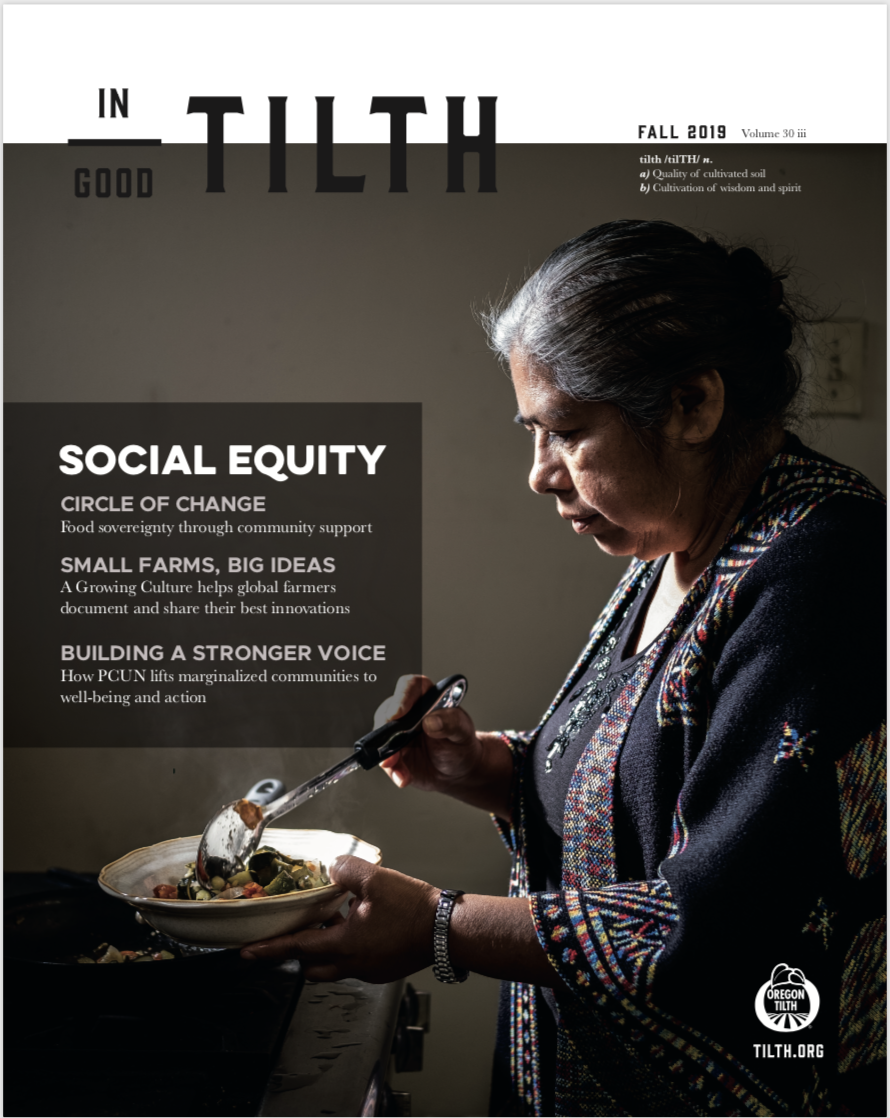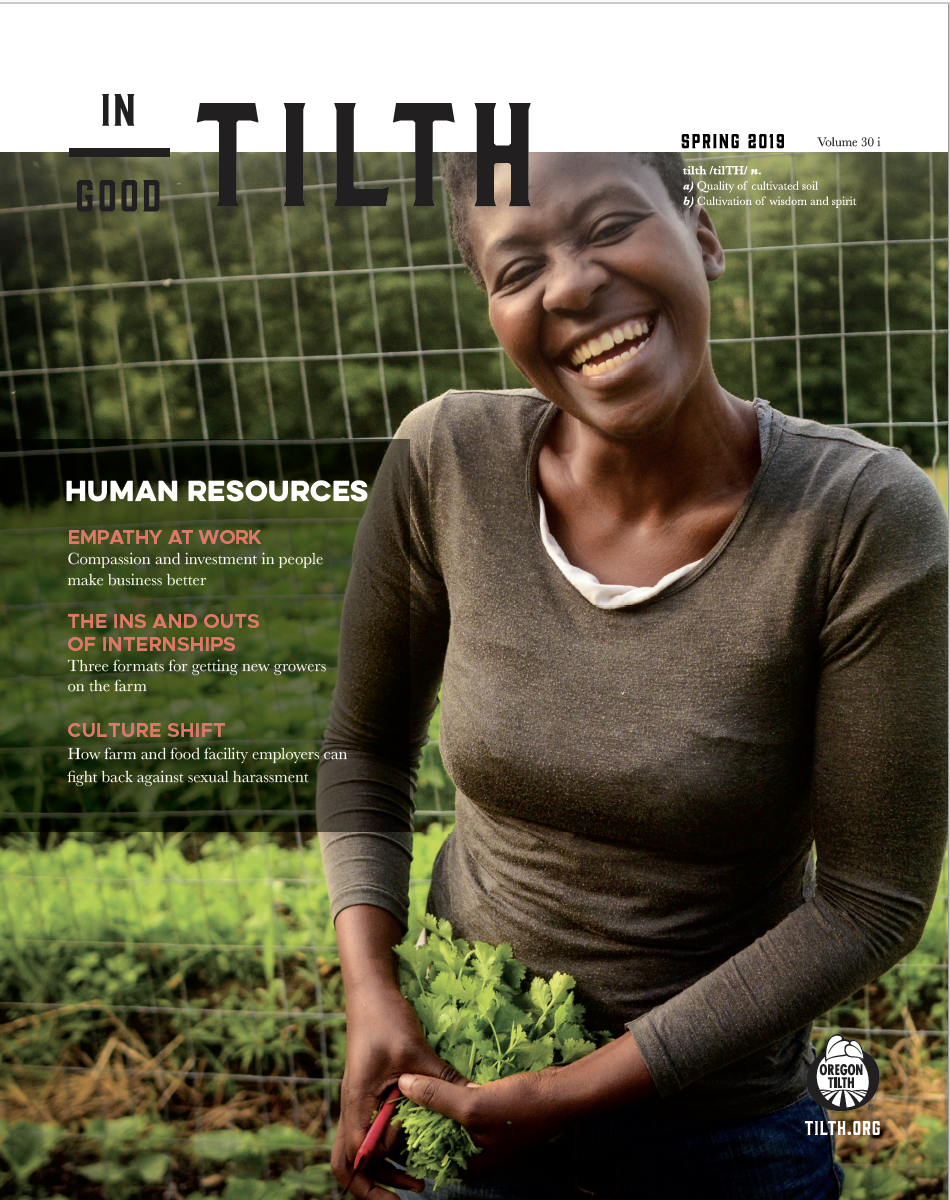Imagine stepping into a farm field on a July afternoon; the air is scented with earth and filled with the sounds of insects. But this world isn’t as tranquil as it looks. Behind the soundtrack of cicadas, crickets and katydids is a silent swarm of insects keeping pest populations in check. Lady beetles prey upon aphids, while hoverflies snatch thrips. Parasitoid wasps and flies employ a strategy well suited to a science-fiction film—laying eggs on (or inside!) pests, where their larvae consume the hosts. These diminutive “natural enemies” play no small role in agriculture. A 2006 study estimates that insects provide $4.5 billion worth of annual crop pest control.
Though insects’ abilities to control pests have taken a backseat to insecticides, many agricultural producers are now encouraging those natural enemies to take on the pests. It’s called biological control.
The Xerces Society, a nonprofit organization dedicated to protecting invertebrates and their habitats, works extensively on pollinator conservation and has recently expanded its focus to other beneficial insects such as those providing conservation biological control.
“We were promoting pollinator conservation in the agricultural world and recognized that many organisms besides pollinators benefit from the habitats that we create,” said Thelma Heidel-Baker, the Xerces Society’s conservation biological control specialist. “We decided to broaden and incorporate predators and parasitoid insects, and to look at how these beneficial insects can help increase pest management.”
This year, the Xerces Society is rolling out a series of full-day short courses across the country titled, “Farming with Beneficial Insects,” to educate growers interested in incorporating these methods.
“These courses are geared towards the agricultural community, and we try to incorporate crop consultants and Natural Resources Conservation Service staff since they are the ones working with the farmers on the ground,” said Heidel-Baker. “We’re trying to get the word out about conservation biocontrol and providing resources to those who are implementing more sustainable management approaches.”
These courses are supplemented by Xerces’ 2014 book, Farming With Native Beneficial Insects, which guides planning and implementing on-farm insect habitat.

Eric Brennan, a USDA research horticulturalist, recommends creating an “all-you-can-eat-buffet” for on-farm biological control. This consists of perennial hedgerows bordering fields, using flowering cover crops, and intercropping flowering annuals within fields to provide the nectar many insects require for survival. These within-field nectary plants (or “temporary cafeterias”) provide habitat near target crops, while the permanent hedgerows offer protective habitat for insects during harvesting, tilling or overwintering.
Brad Bailie, of Lenwood Farms in Connell, WA, employs similar methods. “I’ve installed beetle banks and permanent habitat installations on pivot corners and field edges, creating habitat so that beneficials have a place of refuge during the disruption events that happen on a farm,” he said. “By planting flowers as resources, I’m encouraging the species that are naturally occurring.”
Conservation biocontrol includes practices such as preventing insecticide use in sensitive areas of the farm and not spraying or mowing when flowers are in bloom. Due to this, conservation biocontrol meshes well with the National Organic Standards mandate to improve on-farm biodiversity.
“This makes sense in terms of the goals of organic production because you are improving the biodiversity on your farm,” said Heidel-Baker. “In doing so you receive pest management while benefiting pollinators and other wildlife.”
This applies on a large scale, too. Eric Lee-Mader, pollinator program co-director at the Xerces Society, noted that many organic food brands have formed partnerships with the Xerces Society to create on-farm habitat for pollinators and beneficials.
“Over the past decade,” he said, “we’ve worked increasingly with large-scale producers who are willing to modify their own pest management programs. It’s satisfying because we can plant a huge amount of habitat.”
Jim McGreevy manages Cloudview Ecofarms, a 20-acre mixed vegetable farm in Royal City, WA, where he also runs his own organic seed company. Nine years ago he began implementing conservation biocontrol for pest management and has noticed the biodiversity benefits. He estimates the farm has up to 15 native bee species, despite being surrounded by a monocrop landscape lacking flowers.
“We see gamebird populations we haven’t seen before, and predatory birds that control rodent populations. Hopefully we are an oasis for them.” These practices, he said, “go hand in hand with the organic philosophy.”

At Cornell University, Assistant Professor John Losey researches the intersection between pest control and conservation biology. As the director of the Lost Ladybug Project, he’s concerned about the conservation of native coccinellids, a taxon of insects that are voracious aphid predators in agricultural systems.
“In just a few decades we have gone from a complex of species that was diverse and native, to a landscape that is dominated by just a few, non-native species,” said Losey. He worries that these non-native lady beetles may not fill every ecological niche, and dense populations of single species are susceptible to disease outbreaks that could cause populations, and their pest control services, to plummet.
In soybeans, natural enemies — particularly lady beetles — help to significantly suppress the soybean aphid. “If there was a sudden decline in Harmonia axyridis populations, it is not clear there would be other lady beetles that would be able to immediately control the soybean aphid,” said Losey. “That’s why we need to think ahead and shore up biodiversity to help natives recover.”
Losey thinks that rigorous research on conservation biocontrol practices are needed, especially long-sighted studies that examine production and yield. “To advocate for higher biodiversity and lower pesticides, it’s important to make sure we are encouraging practices that work,” he said.
The Xerces Society cooperates with researchers at universities and institutions doing some of this fundamental research. One such partner is USDA’s Eric Brennan, who conducts research at a USDA farm in Salinas, CA. Over the past nine years he has worked to improve the efficiency of biological control in lettuce systems. In his first experiments, beneficial enemy habitat took up 17 percent of available field space, but recently he has honed in on the best ratio of sweet alyssum (a nectary plant for beneficials) to lettuce.
“It’s a win-win situation,” he said. “You can stick the alyssum right in between the lettuce without any decrease in yield.” He’s currently working on creating an alyssum seed pellet that is the same size as a lettuce pellet, so that farmers direct-seeding their crops can seed the perfect ratio of annual beneficial insect habitat as they plant their crops. And he’s looking for farmers who want to test this product. “Conservation biocontrol really does work if you can figure out how to integrate it into the system,” he said. “I’ve never seen an aphid become resistant to a hoverfly!”

Lee-Mader agrees and credits the long-term service that biological control can provide as a reason that large-scale producers are taking notice. “We have models now that demonstrate this works on a large scale,” he said, “and pest insects never develop resistance to predators. I think segments of the food industry recognize this.”
Not only does conservation biocontrol provide economic pest control, but it can offer habitat for sensitive native species. A 2016 study by researchers at Washington State University revealed that many beneficial insects are highly attracted to milkweed species. As caterpillars of the endangered monarch butterfly depend on these same milkweeds, this finding highlights the dual roles native on-farm plantings can play.
This practice bridges the divide between wildlife conservation and production agriculture.
Wildlife receives a second benefit from conservation biocontrol: decreased pesticide application. In 2013 alone, Earthbound Farms claimed its non-chemical methods of pest control, including conservation biocontrol, eliminated the use of 620,000 pounds of toxic pesticides. Even organic compatible sprays can be harmful to beneficial insects. “Since we started creating habitat for beneficials, we haven’t had to do the organic spraying that we had to do in the past,” said McGreevy. This reduction in pesticide use benefits both natural enemies and insect pollinators. “Beneficial insects have many of the same habitat requirements and need for protection from pesticides that pollinators do,” noted Lee-Mader.

These methods must be incorporated cautiously into each unique agricultural system. This includes ensuring that habitat is protected from pesticides. “If you plant habitat adjacent to a property you don’t have control over and it gets sprayed, you’ve potentially created a sink for all the beneficial insects,” said Heidel-Baker. “We need to identify the locations on farms where it’s most appropriate to include habitat.”
Additionally, it’s possible for plantings to attract crop pests. In Brennan’s system, sweet alyssum can attract the Bagrada bug, a pest of brassicas. Though he hasn’t observed complications in his lettuce crops, he cites a need to investigate alternative, non-brassica insectary plants to provide farmers multiple planting options.
Conservation biological control uses organisms that are already present. “It’s a long-term approach that provides pest management down the road, as well as many secondary benefits,” said Heidel-Baker.
These secondary benefits can be far reaching. Beyond an increase in biodiversity, McGreevy has observed that “from a soil management perspective, these practices have enhanced our soil tilth and even increased our almost non-existent earthworm populations.” Despite being surrounded by conventionally-farmed land, he’s noticed that his neighbors are recognizing the benefits of biological control and conservation.
“We can’t ignore the animal aspect, both micro and macro, that is often left out of vegetable farming,” he said. “We need to look at the farm as an organism. That remains, in a philosophical sense, the right thing to do.”



















